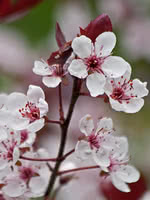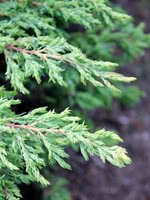Mon-Fri 9am - 5pm Mountain time
Common Juniper vs Purple Leaf Sand Cherry
Prunus x cistena
Juniperus communis
CUSTOM GROW
NOT AVAILABLE THIS SEASON - MIGHT RETURN
Purple Leaf Sand Cherry provides bright reddish-purple leaves that turn bronze-green in the fall. In the spring, tiny flowers with a pinkish white hue bloom. The flowers are small, but the impact comes from the shrub blossoming all at once.
The Purple leaf sand cherry can be susceptible to pests and diseases in more humid areas; a typical life span is approximately 15 years. Not suitable for a privacy hedge on its own but is often alternated with lilacs. Often used as an accent plant that attracts birds and bees.
Common Juniper is a wide spreading, coniferous shrub with scaly needles and small, berry-like cones. Used as a landscaping shrub, it typically grows 3 or 4 feet tall and will not spread like Creeping Juniper.
You can plant Common Juniper near building foundations or beneath larger trees to provide year-round color and texture to your yard with minimal maintenance.
Purple Leaf Sand Cherry Quick Facts
Common Juniper Quick Facts
Toxicity: the leaves and seed are slightly toxic

